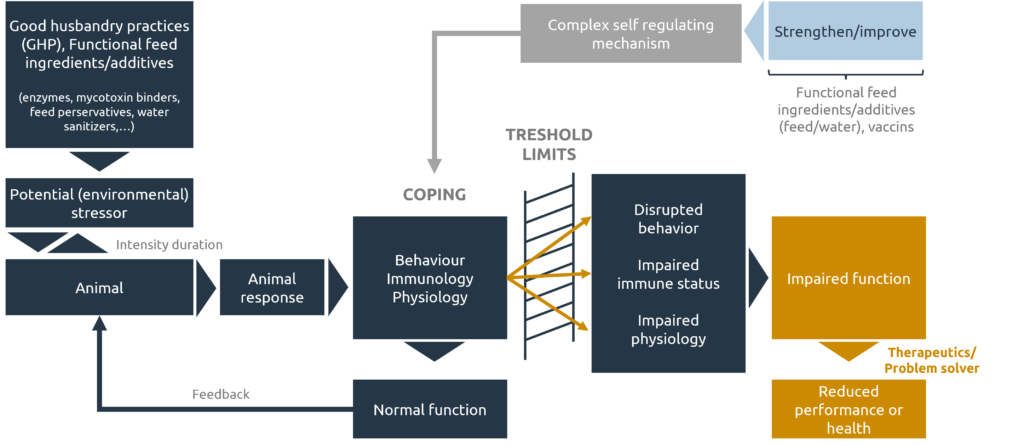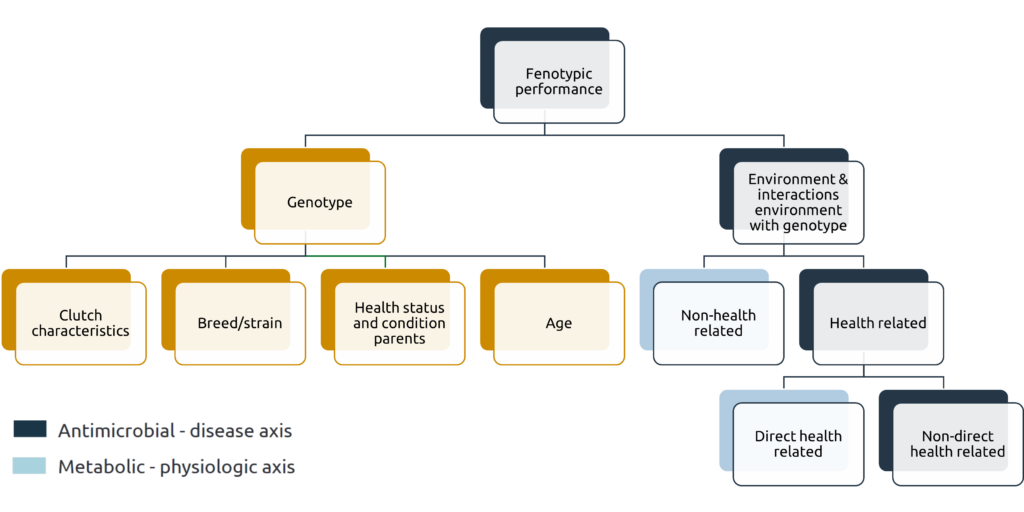Written by Jan Vervloesem, Global lead poultry at Agrifirm
With a world population still growing and probably reaching close to 10 billion by 2050 sustainable and safe food production becomes a big challenge not only to the authorities but to all of us. Resources to produce eggs and meat will become more rare meaning efficiency needs to be improved to meet the 25% of population growth.
The trust on the use of antibiotics to fight several diseases, mortality and to solve performance problems in the poultry industry is being questioned by consumers and authorities. Antimicrobial growth promotors (AGPs) have been used for decades by the industry to improve efficiency and food safety but today Anti-microbial Resistance (AMR) is becoming a major and global issue. This issue has a significant influence not only on poultry production but also on the human population causing millions of deaths yearly. This evolution calls for a change in strategy to limit the use of AGPs and antibiotics in livestock production.
Antibiotic free poultry production
In Europe AGPs in feed were banned as from 2006. This has resulted in a massive increase of new additives and functional feed ingredients (FFIs) trying to replace the AGPs. It was soon clear that replacing one product just by another non-AGP product claiming similar mode of actions (mainly antibacterial) was not sufficient. Replacing AGPs requires a solid and complete strategy which can be different between regions and even between companies depending on the objectives and on the situation. Additionally, as from this year (2022), the prophylactic use of antibiotics in livestock production is forbidden in Europe as well. So again new alternative strategies and concepts need to be developed to safeguard the efficiency and food safety.
Strategies for replacing AGPs and reduce the use of antibiotics
Breeding companies and integrations work side by side to improve the efficiency, to reduce the pressure on the climate and environment , to improve the wellbeing and health of the animals as well as to contribute to safe food production.
The principle of combined responsibility to efficient, sustainable and safe poultry production

Strategies for replacing AGPs and reduce the use of antibiotics
Figure 1: Responses of animals to potential environmental stressors (adapted from Hand and Becker, 1984).
Back in 1984, Hahn and Becker described the responses of animals to environmental stressors. Based on their view it is clear that replacing AGPs (as a solution to control diseases and improve performance) requires both a preventive strategy to manage the environment as well as a biological strategy to strengthen the animal (to improve the threshold limits) and at the same time to improve efficacy to minimize the cost of response. The behavior, the immune system and physiological adaptations are the “self-regulating” mechanisms which poultry have to depend on when being exposed to stressors. Of course, these mechanisms need maintenance and energy which comes at a cost (mainly measured by increased feed conversion or reduced weight gain). It is the type of stressor, the duration and the intensity as well as the physical condition of the animal that determines whether the animal can cope with the stress or not. And if this affects performance of the animal, the wellbeing and/or food safety.
Reducing the risk on stress
For that reason replacing AGPs requires a stringent preventive strategy to reduce the risk on environmental stressors. This implies the use ofGood Husbandry Practices (GHP) (to manage eg. climate control, stocking densities, …), Functional Feed Ingredients (FFIs) and additives to control mycotoxins in the feed. It’s also important to preserve the feed, to disinfect the water, to improve feed digestibility (enzymes), and implement an adapted feeding strategy (lower protein, more fiber).
The principle of combined responsibility to efficient, sustainable and safe poultry production

Figure 2: Main axis to work on helping reduce and replace the use of antibiotics and AGPs. The antimicrobial-disease axis includes acting on bacteria, viruses, fungi and microspores. The metabolic-physiologic axis implies acting on both non health as well as on non direct health related issues. This covers most of the activities related to general management as well as nutritional strategies, feed quality, and growth profiles affecting the physiological needs.
Strengthening the animal
At the same time the animal needs to be conditioned to shift the threshold limit to a higher level so it can cope better and/or longer with stressors. This can be achieved by working on the quality of the day old chicks by improving the health status of parent stock ,but also by stimulating the development and activity of the intestinal tract, by modulating the immune system, by increasing the anti-oxidative activity, and by creating a balanced microbiome.
Conclusion
The transition to an AGP and antibiotic free poultry meat production has started almost 2 decades ago and will be continued over the next decade. Some countries and companies have taken the lead in this, others follow slowly but today the knowledge to replace AGPs and antibiotics in general in poultry production is available and successfully practiced by many companies. Defining the right strategy, focusing on the relevant stressors and understanding the needs of poultry will enable us to produce poultry meat efficiently, sustainable and safe. Agrimprove can, together with you, farm ideas which fit your needs.